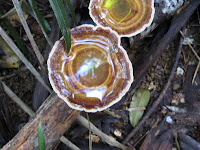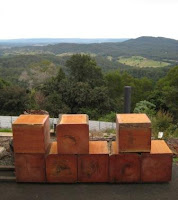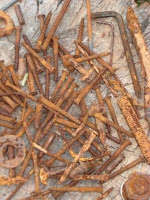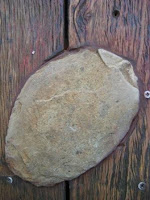In my last blog I mentioned that I have been working with Edith-Ann from the
Hinterland Business Centre on a piece of public art in the form of a concrete path. Six large concrete panels (1.8m by 1.8) depict various aspects of the history of the
Maleny hinterland. Each of the panels is separated by a .9m by 1.8m plain panel that will provide path users with points to pause and ponder the path but also it helps the subject matter of the bigger panels to stand out.
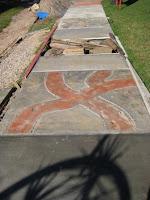
The idea of the path was conceived Edith-Ann but given the size of the project I offered to help with mixing concrete, working in the colour and at times suggesting some design elements and technical solutions.

So far we have completed 5 panels that depict: the formation of the mountains through volcanic action; the formation of the rivers of the area; the growth of the trees; the pathways of people
criss-crossing visiting and working in the area; and the industries operating in the area today. We have yet to do the central panel on first people of the area (the
Gubbi Gubbi Aboriginal people). We will be doing this panel soon in partnership with a local
Gubbi Gubbi elder. The photos show some of the details of a few panels.
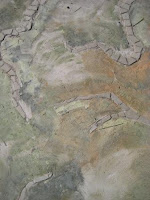


The path is attracting quite a bit of local and visitor interest – many people have commented on the individual character of the panels and the use of colour. Launch day can’t be too far away. There is talk of including the path and story of its
construction in the up-coming publication
Earth Dreams Magic.


